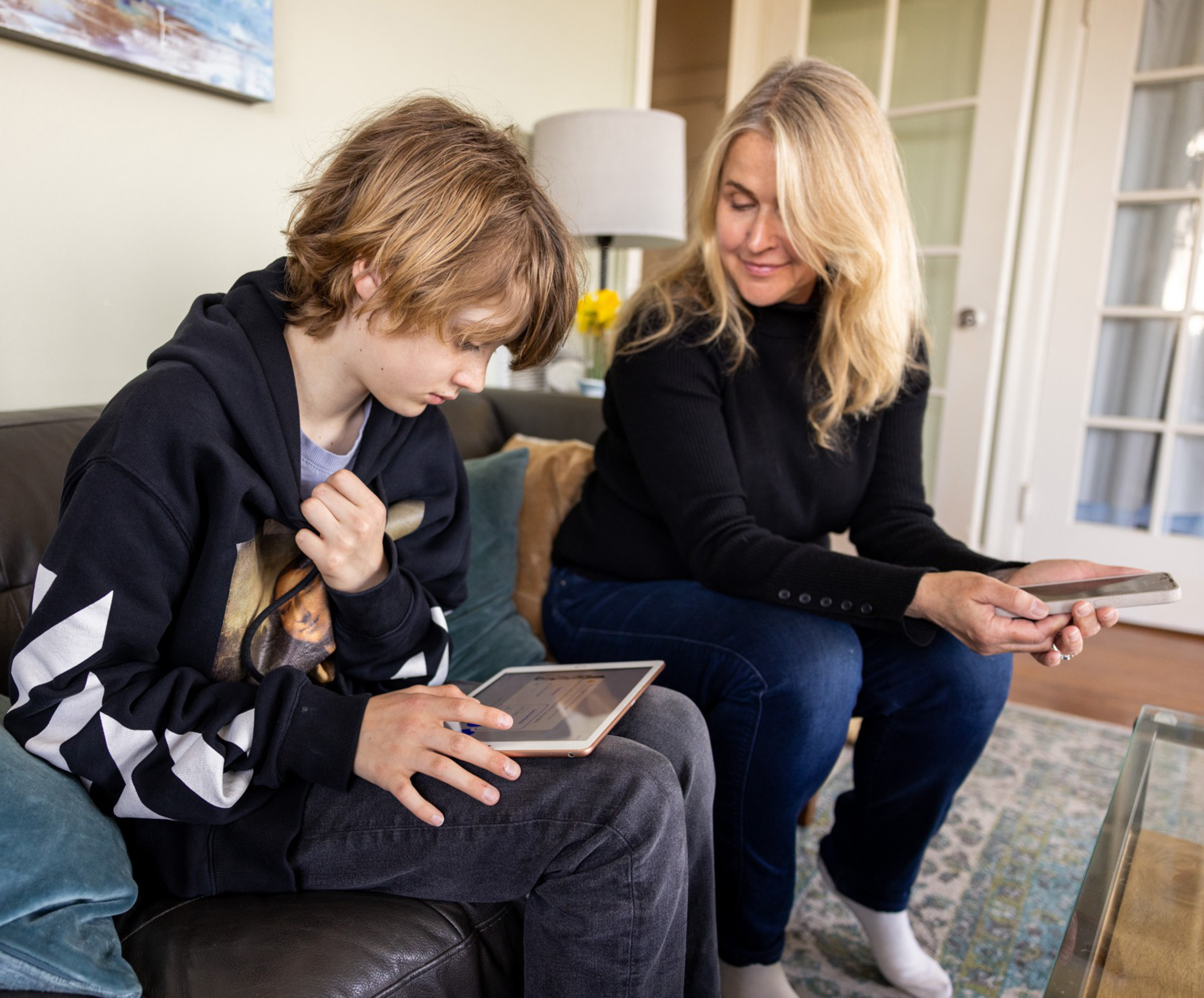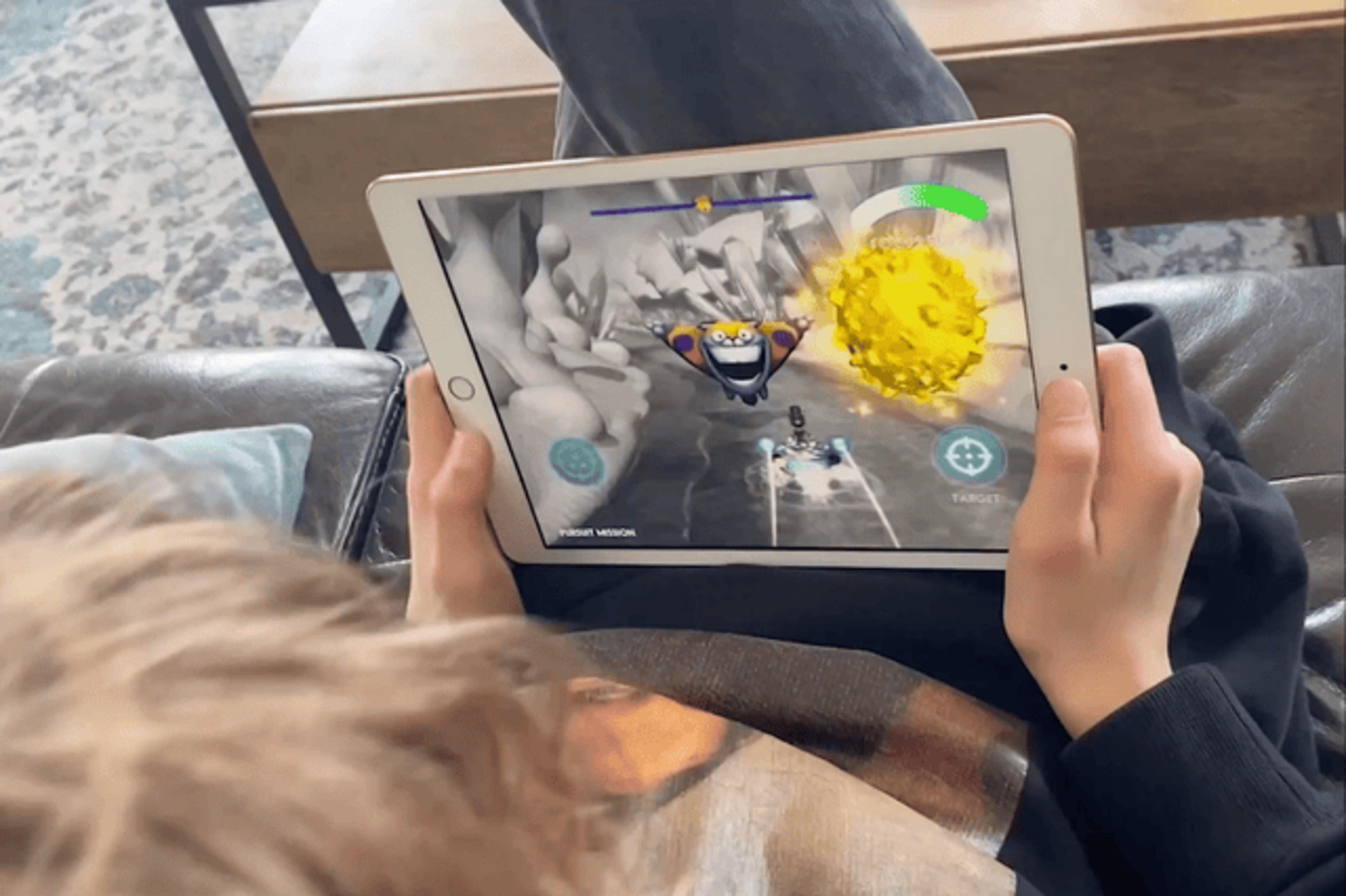Could a video game treat attention-deficit/hyperactivity disorder—better known as ADHD? It may sound like science fiction or a clever idea from a kid’s brain to get out of doing homework.
But EndeavorRx, a first-of-its-kind, FDA-approved digital therapeutic (opens in new tab), is real, and some Bay Area families are turning to the game as an alternative to traditional medication for the neurodevelopmental disorder that impacts 6.1 million children nationwide (opens in new tab).
San Francisco parents Gretchen and Peter Anderson were reticent to put their son, Gage, on oft-prescribed stimulant medications such as Ritalin or Adderall after he was diagnosed with ADHD in early elementary school. They wanted to explore alternative therapies before turning to pharmaceuticals. After trial runs of cognitive behavioral therapy (opens in new tab), or CBT; trying out supplements like fish oil; and tinkering with Gage’s diet, the family eventually hit a wall, and Gage, now 12, begged his parents to put him on medication because he was struggling so much in school.
“One day, he said, ‘I know I’m as smart as these kids. But I can’t do it,’” Gretchen said, her voice cracking with emotion as she retold the story. “And he said, ‘Can you just put me on medication so I can pay attention and do this?’”

At that point, the family sought out an ADHD specialist who prescribed Akili Interactive’s EndeavorRx (opens in new tab), the first-ever video game to be approved by the FDA (opens in new tab) as a medical treatment. The prescription-only video game was born out of the research lab of UCSF neurology, physiology and psychiatry professor Dr. Adam Gazzaley, who is also the executive director of UCSF’s Neuroscape Center (opens in new tab) and a co-founder and board member of Akili Interactive.
A video game prototype developed by Gazzaley’s lab, called NeuroRacer, found that playing the 3D race car game improved cognitive performance in healthy older adults (opens in new tab). The technology underlying that game is the foundation for EndeavorRx, which is made for children ages 8-12 with ADHD.
So how does it work? EndeavorRx challenges patients to zip through alien worlds, collecting whimsical creatures and objects. Toggling between tasks, like steering your spaceship and capturing flying critters, trains the mind to maintain attention even after the color playscapes fade and players return to real life.
The game also responds in real time to users’ input. For instance, it may speed up gameplay if you’re performing well or slow down if you’re stumbling along; the game will also update itself with new challenges or rewards based on a player’s performance. Ultimately, Gazzaley likens the digital interface to a personal trainer but for your mind.
“It’s a very, very high-level attention trainer that’s really optimized personally to your ability level,” Gazzaley explained.

One in three children who played the game 25 minutes a day, five days a week for four weeks no longer had an attention deficit on at least one measure of attention, and 68% of parents noticed an improvement in ADHD-related impairments after two months of treatment, according to study findings published on EndeavorRx’s website (opens in new tab). Results of another study are promising enough that Akili Interactive is seeking to expand the prescription label (opens in new tab) for children ages 13-17. Gazzaley said he hopes that with research, video game technology can be applied to treat a wide array of cognitive disorders—from anxiety and depression to multiple sclerosis or dementia.
While some may be skeptical of a video game’s ability to treat clinical disorders, Gazzaley said he believes that treating video games like viable therapeutics is part of a fundamental reframing of how health care providers develop and deliver treatments.
“The idea of a new medicine that acts through plasticity, by changing your brain, and not merely through putting a chemical on it is a paradigm shift,” Gazzaley said. “As we accumulate data, I believe that shift can happen, and that it needs to happen.”
But what about concerns over excessive screen time (opens in new tab) and addiction to video gaming (opens in new tab)?
That’s where the prescription part comes into play. Like a carefully calculated drug dosage, providers typically allot 25 minutes of game play, five days per week for one to three months, but sometimes longer, depending on the needs of the patient. A built-in timer shuts off the game after each 25-minute session, making sure that players don’t overdose on game time.
“We don’t want people to play this game all day long,” Gazzaley said. “We want them to go outside and be with their friends and interact with the world. This is not meant to be a replacement for all the things that are good for you in life.”
As for Gretchen and Peter Anderson, they’ve observed noticeable improvements in Gage’s ability to focus and engage with schoolwork.
“Before he started the Endeavor stuff, it was just like he was just hitting a wall, and he just could not get on track,” said Peter, who has also struggled with ADD throughout his life. “His eyes would wander. He’d fidget with things. His body would just start moving, and he’d just be, like, everywhere except for focusing on the page. And now it’s like he’s able to kind of rein it in.”

The breakthrough came for Gretchen when she saw that her son was able to focus in his math class, a subject that he’d been struggling with.
“He was watching the teacher and paying attention, and that was something that I had never seen in him,” she said, welling up again. “I was really thrilled.”
As for Gage, he prefers playing a game over downing spoonfuls of supplements and appreciates how the treatment doesn’t stymy his creativity, which stretches from hydro dipping sneakers to toying with Legos.
“I’ve seen kids who have ADHD, and they’ve taken all these pills and stuff, and it really helps them focus, but now they’re just like robots,” Gage said. “I just like how much better it is than drinking fish oil.”
